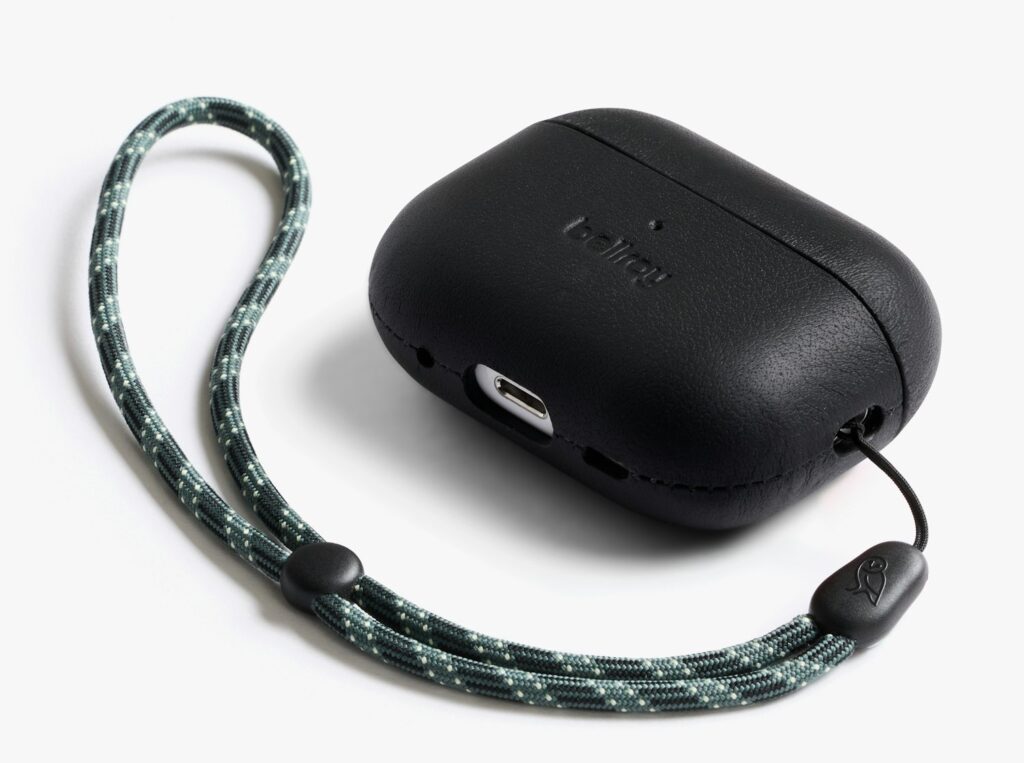
Australian accessories brand Bellroy has debuted a new range of iPhone and AirPods cases that ditch leather for an animal-free alternative.
When Apple announced it was replacing leather with an in-house, eco-friendly alternative during the iPhone 15 presentation two years ago, it was a marker of great potential.
Leather is heavily used in the tech world, and it heavily impacts the planet. With the iPhone maker pledging to go carbon-neutral by 2030, it had to do away with the material.
Its solution, dubbed FineWoven, was described as a microtwill fabric with a suede-like texture and “significantly lower emissions” than leather. It was made from 68% post-consumer recycled content, though it wasn’t clear how much of that was bio-based, and if there was any plastic involved.
The problem was: it kinda sucked. FineWoven cases were inundated with complaints over dust retention, permanent scratches, the slippery texture, and a general lack of durability. One customer compared the material to cardboard, and another likened it to “a polyester pillowcase sandwiched in a plastic shell”, calling the $59 price “insulting”.
It didn’t take Apple long to get rid of the innovation and switch to silicone and plastic for the iPhone 16. And this month, it launched a successor to its ill-fated leather alternative for the iPhone 17 and Air, called TechWoven, which is made from 100% recycled polyester.
Being a new product, the jury is still out. But third-party companies are already attempting to get ahead of the curve – among them is Australia’s Bellroy, which has launched a new range of animal-free leather accessories with US startup Modern Meadow.
Animal-free leather cases for iPhone 17, AirPods Pro

Bellroy’s lineup makes use of Modern Meadow’s Innovera material, which is made from plant-based proteins, biopolymers, and post-consumer recycled nylon. The leather alternative features over 80% renewable carbon content, and is designed to replicate the look and feel of collagen, the base ingredient for leather.
The first products born out of the collaboration include a case for iPhones (from the 15 onwards) and AirPods Pro (versions 2 and 3), which come in several hues, such as black, lilac, orange-tinted “butterscotch”, and beige “tahini”. Bellroy has also unveiled a magnetic wallet that can latch onto the back of smartphones.
“We choose our materials based on a balance of functionality, durability, and their ability to age gracefully,” said Bellroy chief production officer Arya Ghavifekr. “Innovera brings new meaning to longevity in tech cases and accessories with its strength, protection, superior resistance to wear and patina, and similarities to real leather.”
It’s important to note that Bellroy mixes Innovera with additional materials for its products, including plastic shells, other textiles, and glues. So not all aspects of its cases are degradable, which is an important point when considering an item’s end of life and how it can, or will, be disposed. By mixing materials, it’s also essentially impossible to recycle the products.
Innovera integrates into existing manufacturing and tannery processes, eschewing the need for additional equipment or investment. Its uniform structure is designed to ensure consistent quality and high material yield, with less cutting waste and fewer discards due to surface defects.
The biotech startup says Innovera’s production bypasses the most resource-intensive early stages of material making, and doesn’t require preservation methods or cold storage. Moreover, it is lightweight and twice as strong as traditional leather.
“We formed a partnership with Bellroy to help them bring environmentally sustainable Innovera-based products to market,” said David Williamson, CEO of Modern Meadow, which has chosen Germany’s Heller-Leder as a supplier for the cow-free leather.
“With our shared commitment to create high-performance, aesthetically beautiful products that minimise our impact on the planet, we both continue to meet the growing consumer demand for responsibility and transparency without compromising quality.”
Cow-free leather is taking off

There’s a reason why companies like Apple are moving away from leather. Producing it is an energy– and water-intensive process linked to deforestation and biodiversity loss, and generates lots of hazardous chemicals during tanning, which are a detriment to human health.
Leather also has a much higher carbon footprint, at 110kg of CO2e per square metre, compared to synthetic and plant-based alternatives.
That said, synthetic leather often contains plastic, which itself is responsible for 3.4% of global emissions (a share set to double by 2060). Plastic takes 20 to 500 years to break down and decompose, and these leather alternatives shed toxic microplastics that can enter waterways, thus harming aquatic life, the food system, and human health.
“Innovera delivers the perfect balance of science, sustainability and luxury – an experience that creates ideal materials for designers and brands to bring their ideas to life, making them resonate with consumers,” said Williamson.
Bellroy will also release key covers, a passport cover, and an under cover with Innovera. Its co-founder, Andy Fallshaw, said: “By partnering with Modern Meadow, we found a solutions provider that is aligned with our approach to sustainability and using business for good to make products that last and have a positive impact on the planet.”
Bellroy isn’t the only brand making use of cow-free leather – these materials are particularly popular among carmakers. In July, Mercedes-Benz announced that it had created an alternative for its technology programme, Concept AMG GT XX, using Modern Meadow’s technology.
Last year, General Motors unveiled a concept EV under its Cadillac division, which used mycelium-based materials from Californian startup MycoWorks. And this month, Hyundai partnered with US startup Uncaged Innovations to develop animal- and plastic-free leather for its cars and trucks.
The post Apple’s Animal-Free Leather Failed – Can This New iPhone Case Show How It’s Done? appeared first on Green Queen.
This post was originally published on Green Queen.